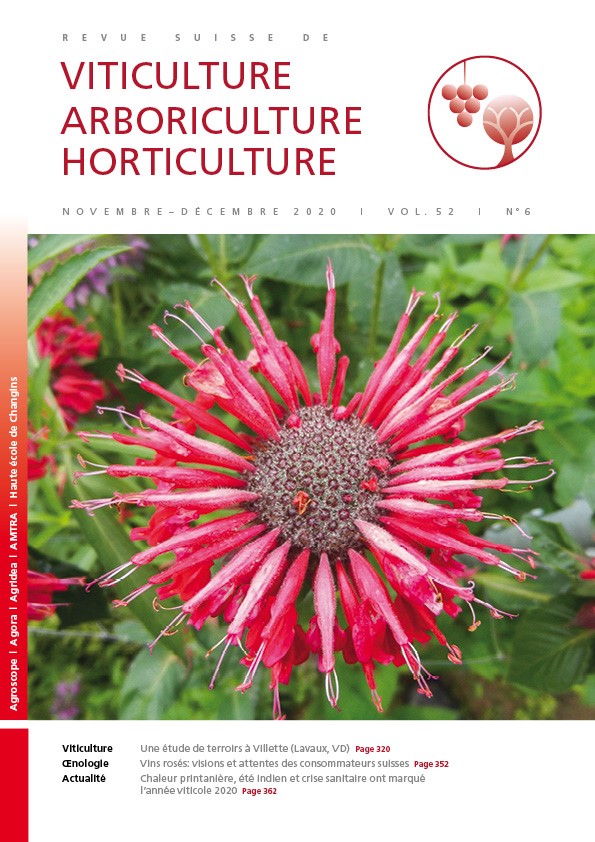
Issue 6 - November - December 2020

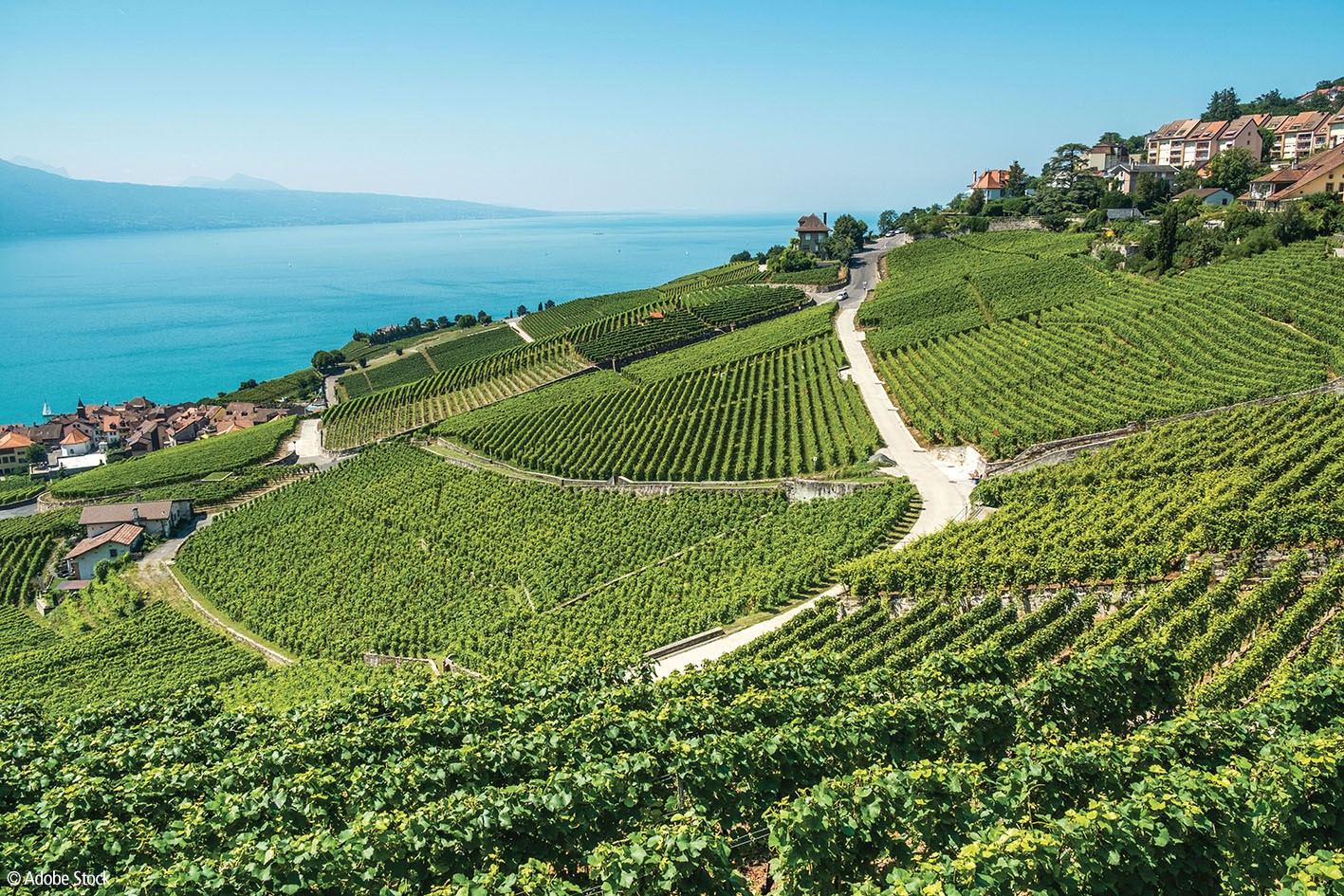
Abstract in open access
For three consecutive seasons, 22 Chasselas L. plots were analysed. The aim of the study was to characterise the terroir of a steeply sloping Swiss winegrowing region by establishing a correspondence between vine and berry physiology and prevailing pedoclimatic conditions. The region offers a unique experimental site, owing to the homogeneity of the plant material in a small microclimate (140 ha) with a multiplicity of different exposures and altitudes. In the three years of study, the temporal variability in average temperature was 142 growing degree-days (GDD). The spatial variability of the temperature between the most extreme plots reached 395 GDD. Statistical analyses of the physiological and pedoclimatic parameters yielded inconsistent groupings of plots between the years, with no correspondence to the geological entities. This shows that the “vintage effect” had a greater influence on vine physiology and berry quality than the “soil effect”. Altitude turned out to be the main factor for earliness for all years, irrespective of vintage. The study provides important information on adapting plant material and on viticultural strategies in view of climate change.
Keywords: viticultural terroir, berry ripening, temperature variability, phenology, climate change
E-Mail: markus.rienth@changins.ch
Adress: School of Engineering at Changins
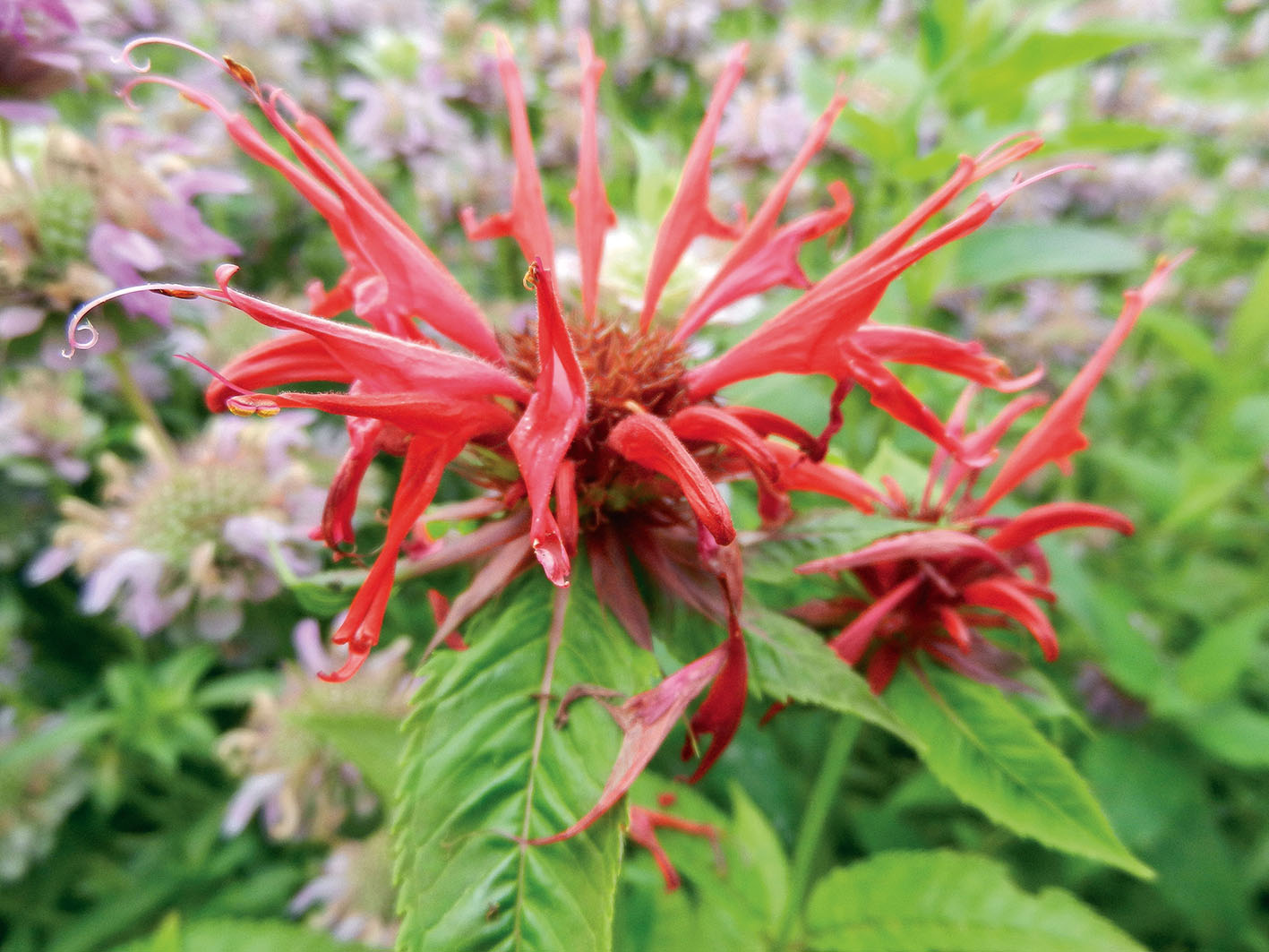
Abstract in open access
In Switzerland, the aromatic and medicinal plants sector is currently developing new markets, particularly for the sale of condiment plants. In this context, bee balm (Monarda didyma) has a strong potential for development, a number of organoleptic qualities, and numerous processing options (syrups, liqueurs, sweets, etc.). To this end, five accessions were selected and grown in Soral (canton of Geneva) according to Bio Suisse specifications. The flowers were harvested and dried for organoleptic analysis at the Changins Sensory Analysis Laboratory (canton of Vaud). Agronomic surveys included flowering date and duration, powdery mildew tolerance, and plant-height measurements. Out of all cultivated lines, only the Jelitto accession was powdery mildew-tolerant. The Jelitto accession also had the most marked sweetness. The Samen Mauser accession was of interest for producing herbal tea mixtures. The typical bergamot flavour of bee balm was not statistically proven at the 5% threshold. Following genetic analyses, the Samen Mauser accession turned out to be the species M. citriodora and not M. didyma.
Keywords: Bee balm, sensory analysis, powdery mildew, agrifood
E-Mail: vdoimo@hotmail.com
Adress: Hepia, 1254 Jussy
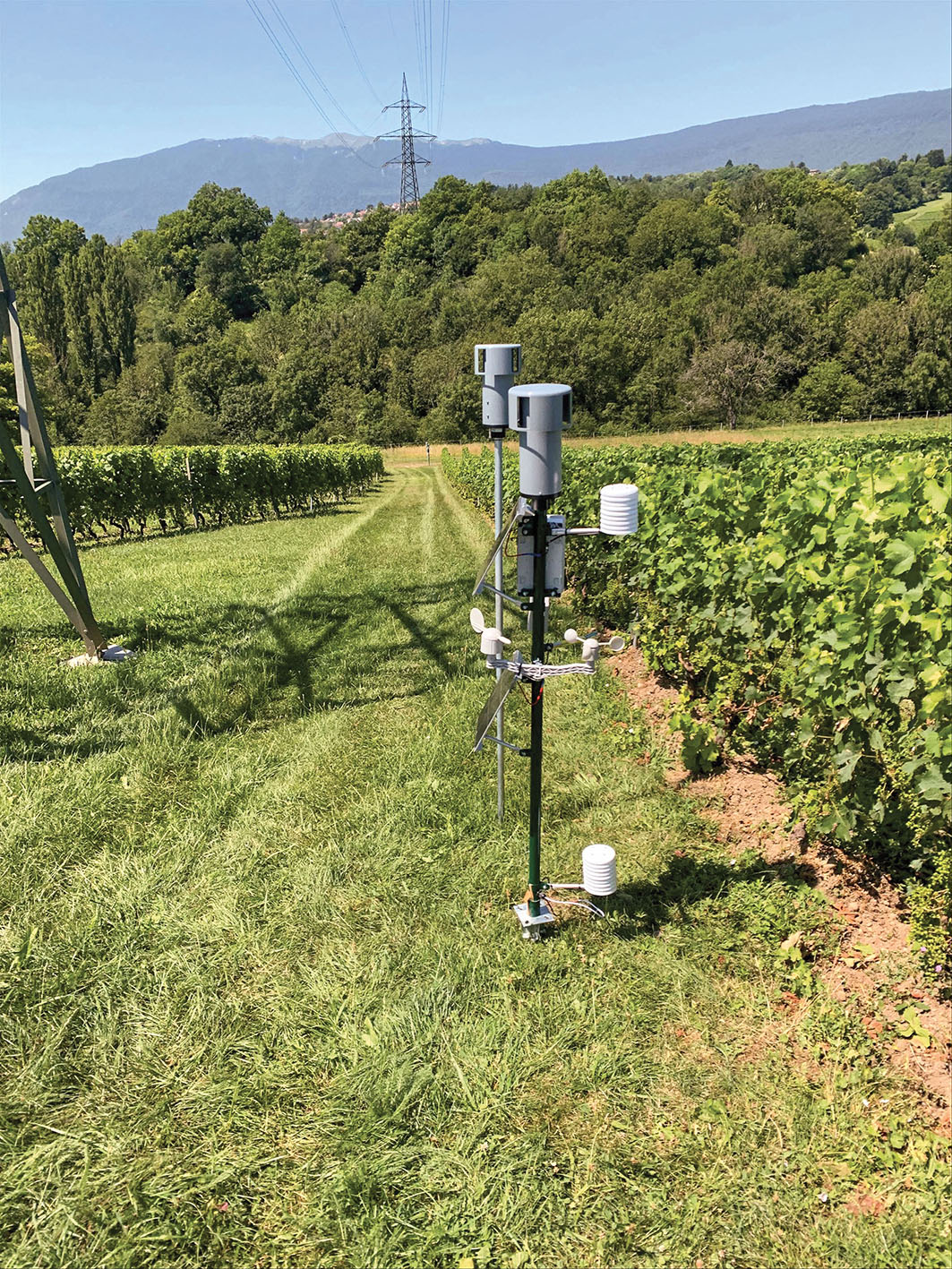
Abstract in open access
Reducing the use of plant protection products entails a more selective spray application in both space and time. This, in turn, requires knowledge of the infection risk of common grapevine diseases on a fine scale. We present a network of measurement stations that monitor airborne powdery and downy mildew spores in real-time by means of a laser system. By detecting the presence of spores before they infect the vines, and by acquiring data with a precision of a few hundred meters, these stations aim at providing essential information on the quantitative development of the infection. Information on the presence of spores could be integrated into forecasting models to obtain new decision-making tools to optimize strategies in the management of fungal diseases.
Keywords: Spore detection, laser, microscopy, downy and powdery mildew, grapevine
E-Mail: jean-pierre-wolf@unige.ch
Adress:
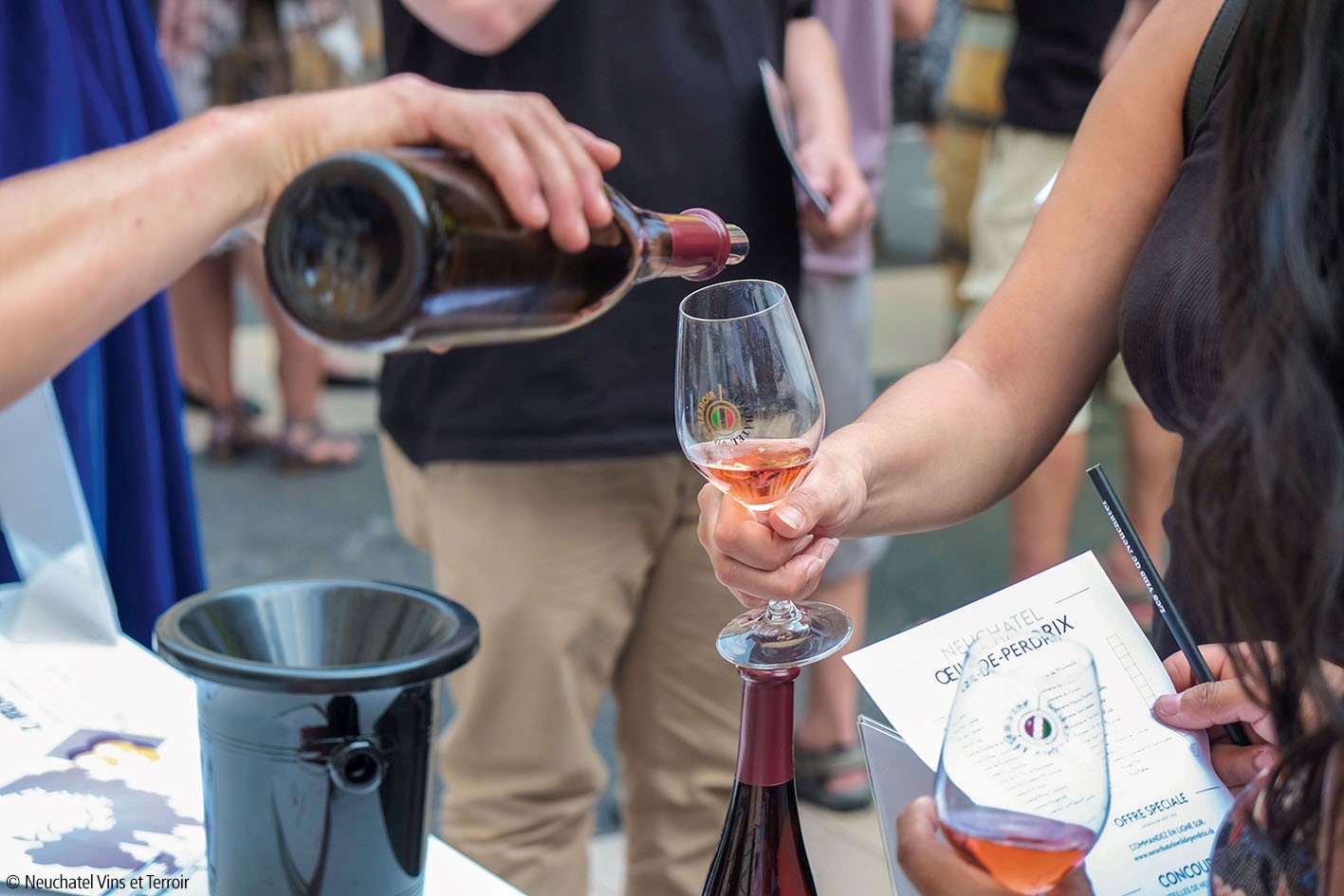
Abstract in open access
Sales of rosé wines continue to grow slightly on the Swiss market, but most of these wines are imported. In order to understand the visions and expectations of Swiss consumers
towards rosé wines, an online survey was completed by 508 consumers during spring 2020. The image of rosé wines is positive and refers to relaxation and conviviality. The fact that the word “rosé” is not included in the Swiss names seems to limit their recognition, mainly by novice consumers. An exception to this is the OEil-de-perdrix, whose reputation is well established. Prices of Swiss rosé wines do not seem to limit their sales, but the lack of opportunities for tastings and meetings between professionals and urban citizens limit their attractiveness. Consumers are looking for moderately colored wines, with freshness, and fruity or floral aromas. Pale pink wines are not popular yet in Switzerland
Keywords: survey, rosé wine, swiss consumer perception, perceived image, purchasing behavior, ideal sensory profile
E-Mail: pascale.deneulin@changins.ch
Adress: School of Engineering at Changins
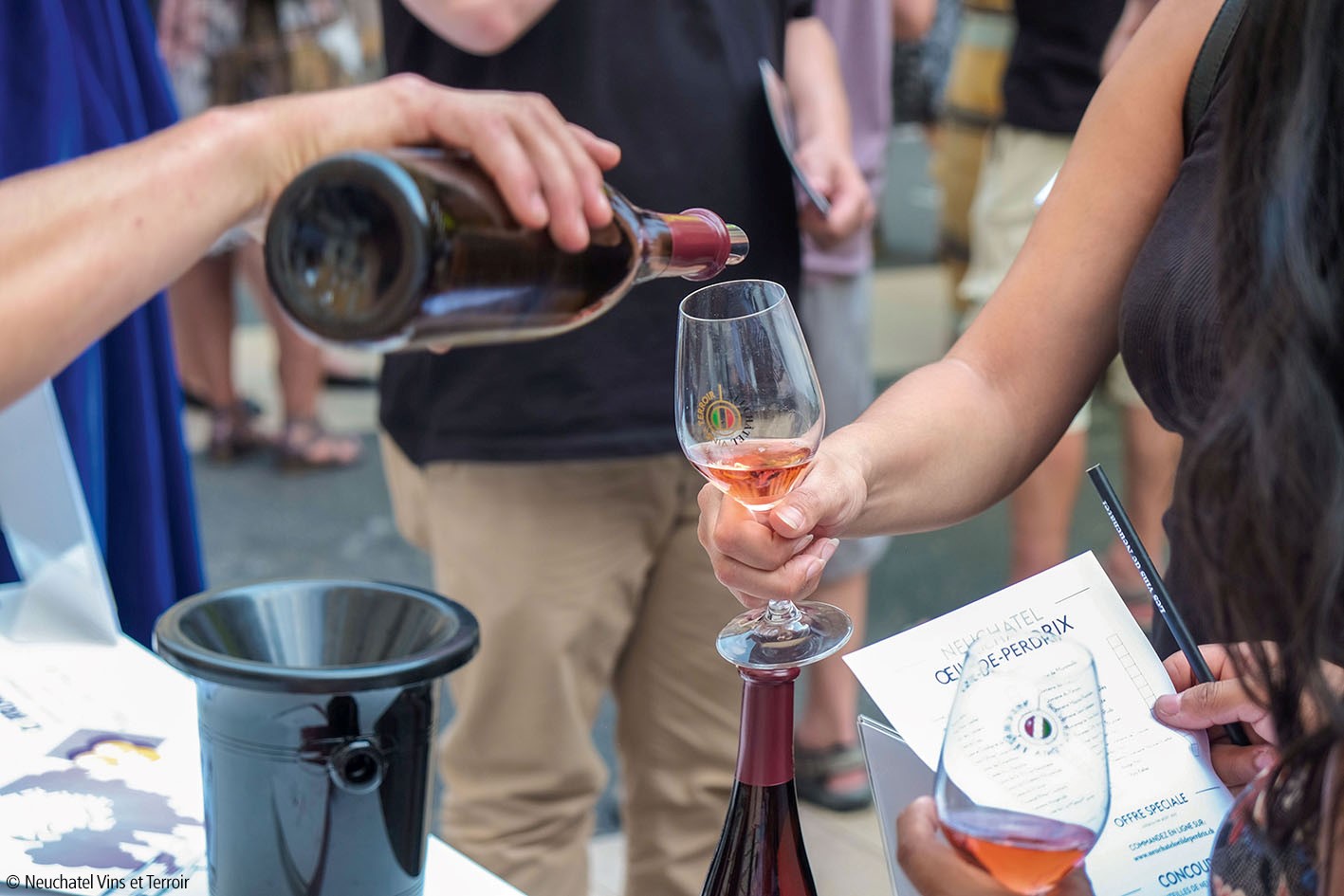
Abstract in open access
Les ventes de vins rosés sont toujours en légère croissance sur le marché suisse, mais ils sont majoritairement importés. Afin de comprendre les visions et attentes des consommateurs suisses concernant les vins rosés, un questionnaire en ligne a été diffusé par Changins et rempli par 508 consommateurs au printemps 2020. L’image des vins rosés est positive et réfère à la détente et la convivialité. Le fait de ne pas inclure le mot «rosé» dans les dénominations suisses semble être un frein à leur reconnaissance par les plus novices, sauf pour l’OEil-de-perdrix, dont la notoriété est bien assise. Le prix des vins rosés suisses ne semble pas limiter leur achat, mais le manque d’occasions de dégustations et de rencontres entre professionnels et citadins limite leur attractivité. Les consommateurs recherchent des vins relativement colorés, avec de la fraîcheur et des arômes fruités ou floraux. La recherche de vins rose pâle ne se ressent pas encore en Suisse.
Keywords: survey, rosé wine, swiss consumer perception, perceived image, purchasing behavior, ideal sensory profile
E-Mail: pascale.deneulin@changins.ch
Adress: CHANGINS Haute école de viticulture et oenologie
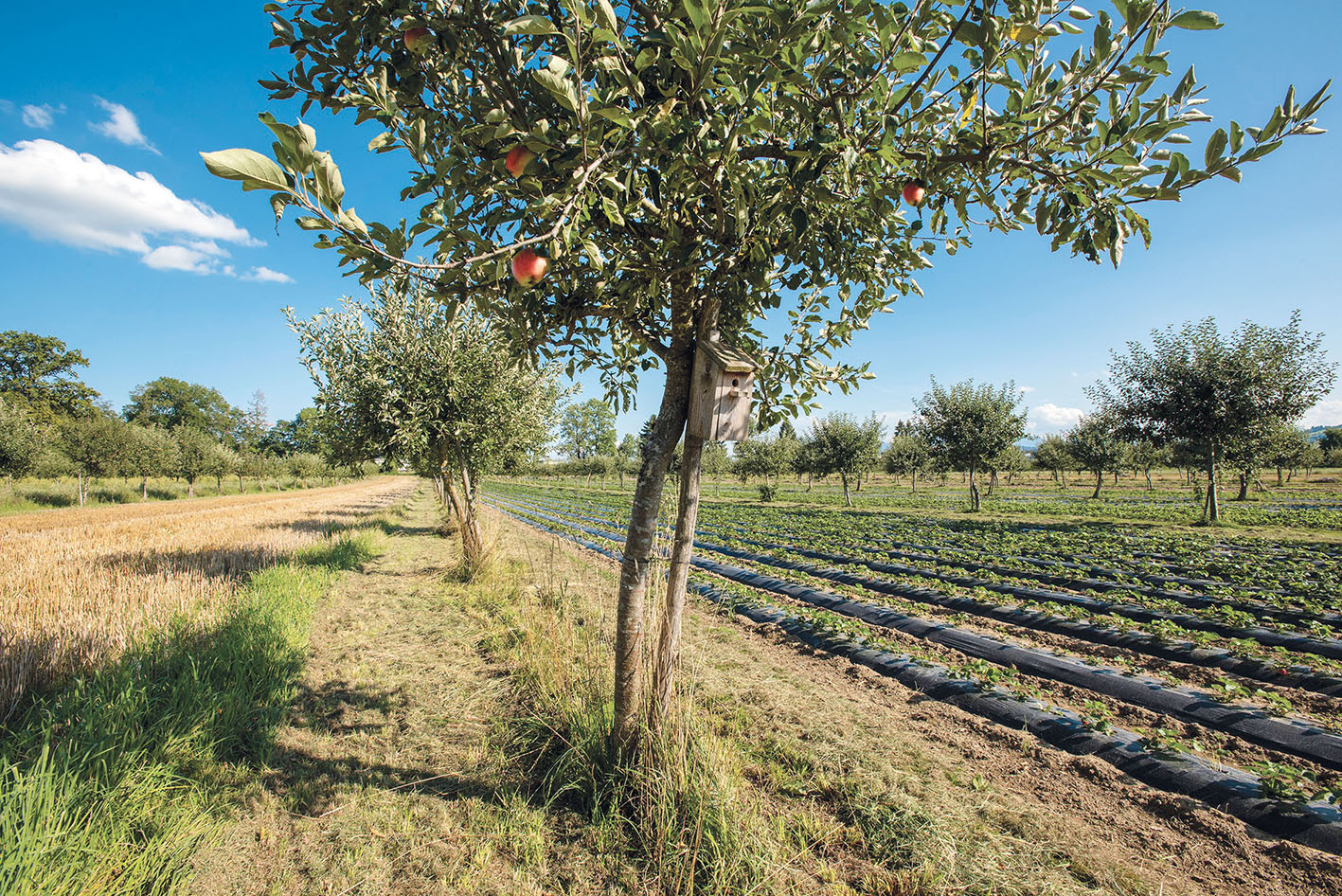
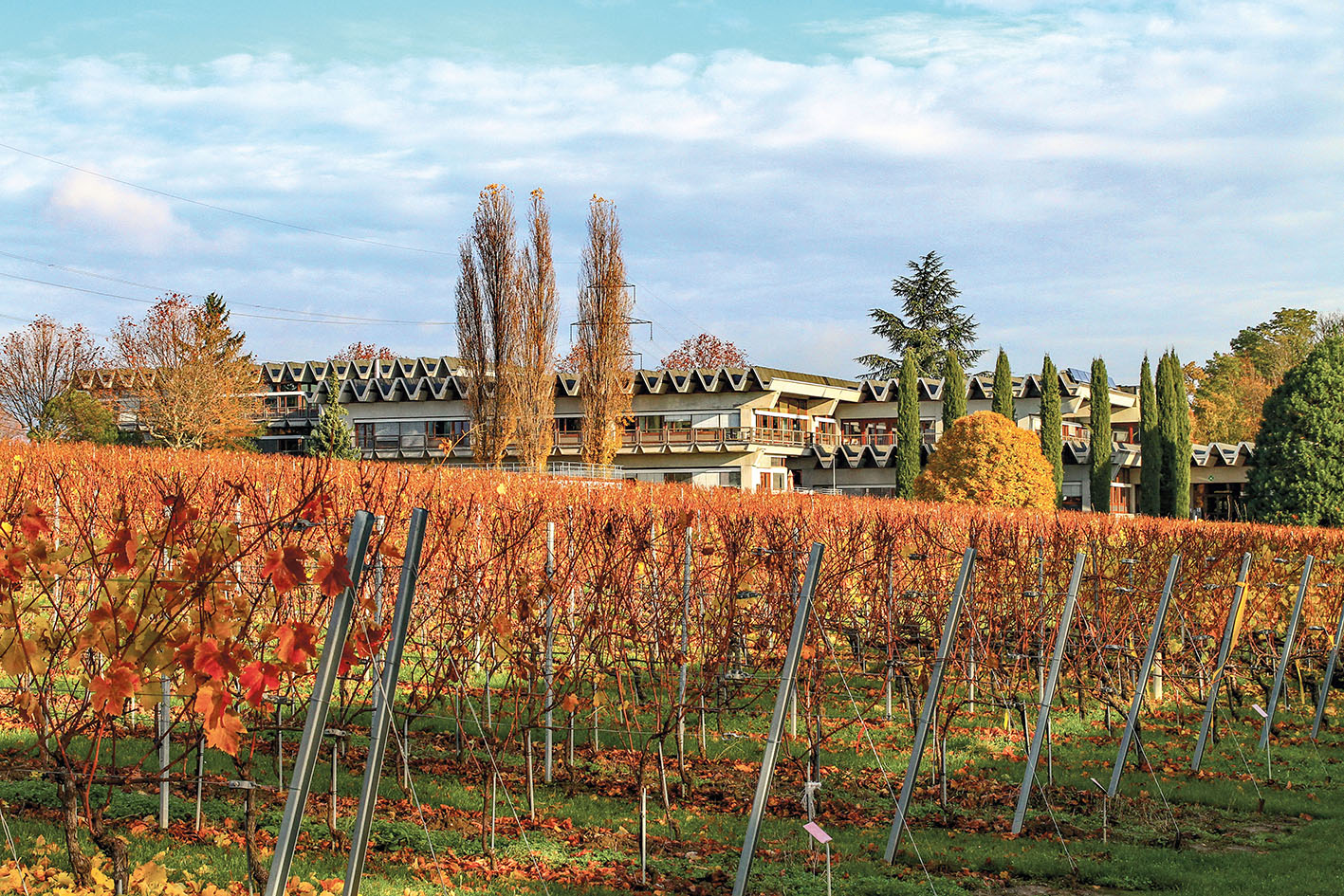

 Download of full issue
Download of full issue
 Download article
Download article